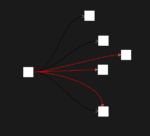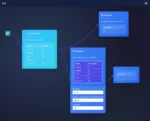
by tyler garrett | Jun 21, 2025 | Data Visual
The political battlefield has undeniably shifted toward data-driven decisions. Understanding voter behavior is no longer just about surveys and polls; it’s about leveraging sophisticated analytics tools and visualization systems to reveal hidden insights. At a time when campaigns are won or lost by razor-thin margins, harnessing data analytics and visualization can mean the difference between victory and defeat. Every interaction, preference, and behavioral indicator provides valuable clues for strategists eager to craft compelling narratives, targeted outreach campaigns, and persuasive voter engagement strategies. With advanced technology, candidates and political decision-makers are no longer in the dark—they understand exactly what voters crave, expect, and ultimately, the reason they step into the ballot box.
The Rise of Data Visualization in Political Campaigns
Gone are the days when voter behavior analytics were confined to spreadsheets, tedious cross-tabulations, or manual data analyses. Today’s campaigns need real-time insights presented clearly and intuitively, which is why data visualization systems have become indispensable for political strategists. The visualization of voter behavior data has immensely facilitated better campaign decision-making, enabling strategists to instantly map demographic interests, track voting preferences, and predict electoral outcomes with greater accuracy.
A robust voter behavior visualization system comprises intuitive dashboards, real-time data streaming, and interactive graphical representations such as heat maps, bar charts, and scatter plots. These visualizations can display data segmented by geography, age, income, previous voting history, and socioeconomic status—with just a few mouse clicks. Consequently, campaigns can strategically allocate their resources to clearly identified voter segments rather than spreading out their efforts randomly.
Additionally, visual analytics allow campaign managers to seamlessly explore voter concerns, sentiment analyses, and cross-demographic synergies. For example, interactive charts can illustrate how voter preferences within one age bracket compare with preferences within another, helping political marketers better fine-tune their messages. When visualized effectively, data trends become immediately actionable insights, helping decision-makers understand quickly changing voter environments. This cross-modal data alignment enhances the integration of multiple data inputs and supports unified analytics views across complex campaign environments.
The Role of Advanced Data Integration in Campaign Analytics
Successful political analytics depends on robust data integration capabilities. Campaign teams encounter vast amounts of voter data—everything from public demographic records and surveys to voting histories, digital engagement platforms, and social media trends. Aggregating and harmonizing these varied data streams is crucial to forming a cohesive narrative and driving strategic campaign decisions.
To overcome fragmented data challenges, innovative campaigns utilize complex ETL (extract, transform, load) workflows and advanced data integration techniques, including asynchronous ETL choreography. Adapting advanced analytical methods enables campaign strategists to operate beyond traditional data processing confines, integrating real-time insights and asynchronous data streams seamlessly to produce timely, accurate voter metrics.
Handling sensitive voter information demands secure and compliant methodologies. Modern voter behavior visualization systems incorporate sophisticated test data management techniques, ensuring personally identifiable, sensitive data remains anonymized and secure while maintaining analytical utility. This delicate balance between data privacy and strategic insight underscores the sheer ingenuity involved in modern voter analytics.
Implementing security mechanisms like multi-party computation for secure analytics helps campaign teams ensure voter confidentiality, fostering trust between campaign teams and constituents. In an age increasingly mindful of privacy and data security, maintaining robust analytics without compromising individual privacy provides a significant competitive advantage.
Harnessing AI and Machine Learning for Predictive Campaign Insights
The true transformative power behind political campaign analytics is derived from applying cutting-edge AI and machine learning technologies. Predictive analytics and advanced modeling techniques allow campaign managers to forecast voting behaviors, sentiments, and election results with higher precision and confidence. Machine learning algorithms can analyze historical voting patterns, current demographic changes, and trending topics to generate accurate, reliable predictions of voter intent.
AI-driven analytics visualize potential voter enthusiasm factors—ranging from economic issues and healthcare concerns to education initiatives and social justice topics. Strategists can utilize actionable visualization of insights around voter communities most likely to support certain policy positions, which aids targeted canvassing and digital outreach.
Furthermore, by leveraging vector embedding pipeline designs, campaign visualization systems become semantically intelligent, capable of understanding voter sentiment, complex language, and subtle preference shifts. This capability allows campaigns to predict how certain voter segments may respond to messaging, policy framing, or debate performances. These depth-oriented prediction models allow candidates to preemptively react to potential voter shifts, adjusting campaign strategies dynamically based on robustly analyzed visual data.
Empowering Voter Behavior Visualization with Effective Text Integration
Beyond standard visualization features such as charts, maps, and graphs, leading-edge voter behavior analytical systems integrate effective textual elements to enhance user engagement, storytelling capabilities, and actionable insights. Text integration in data visualization becomes more than a simple labeling mechanism—it conveys detailed context, insights, and even persuasive narratives designed to capture a voter’s attention or communicate analytics insights to campaign stakeholders efficiently.
Whether incorporated as dynamic annotations explaining voter interaction trends or descriptive narratives that contextualize regional survey data, quality text integration enriches the visualization user experience. When software empowers campaign teams with interactive storytelling capacities, complex voter trends are easily distilled for strategic decision-making.
Interactive text annotations and dynamic visual cues provide instant clarity where voter communities diverge, allowing strategists to shift resources, refocus social media campaigns, or even reframe message framing to better resonate with targeted demographics. Enhanced textual visualization is thus essential in ensuring political analytics are both actionable and intuitively understood by decision-makers within tight campaign timelines.
Data Governance and Visualization Metrics: Ensuring Quality and Trustworthiness
With immense influence, political data analytics must maintain rigorous standards. Accurate voter behavioral insights require precise, high-quality data, which inevitably places data governance and metric collection front and center for any successful visualization implementation. Governance strategies define how voter data quality should be controlled, maintained, and monitored, ensuring campaigns base decisions on highly reliable, transparent, and accountable insights.
Campaign strategists must implement structured data governance strategies to monitor visualization accuracy, data lineage, and metric consistency. Clear data governance policies promote trustworthiness and reliability of campaign analytics insights. It ensures correct voter segmentation, engagement statistics, and electoral predictions—elements crucial to campaign direction.
Ultimately, governance maintains long-term integrity in voter strategy visualizations, empowering campaigns to explore voter engagement, pinpoint geographic outreach areas, target demographic messaging, and extract predictive insights with absolute confidence. It solidifies organizational accountability, transparency, and ethical handling—key operational success standards in today’s highly scrutinized political analytics environment.
The Future of Voter Behavior Visualization Systems
As campaigns evolve and become more technologically advanced, frameworks like the data lakehouse implementation promise to become industry mainstays for large-scale data management and analytics in political contexts. Voter behavior data lakes or lakehouses enhance scalability and flexibility of integrating real-time voter behavioral information, community feedback, surveys, and digital interaction data.
Visualization systems will continuously become smarter, embracing advanced semantic technologies, predictive targeting, secure computations, and more refined textual annotations. Political campaigns willing to embrace innovative visualization approaches and analytics solutions will realize a transformative competitive advantage.
At Dev3lop, we hold expertise across data and analytics technologies, including Microsoft SQL_SERVER, supporting robust and scalable analytical environments. Intelligent, visually compelling analytics will profoundly shape future political strategies, enabling smarter decisions, clearer insights, and direct voter engagement. The visualization revolution is well underway—and successful campaign strategists will not hesitate to embrace it.
Thank you for your support, follow DEV3LOPCOM, LLC on LinkedIn and YouTube.

by tyler garrett | Jun 21, 2025 | Data Visual
As global waste production accelerates rapidly alongside population growth and increased consumption, industry leaders are recognizing the critical importance of strategic waste management analytics. Data-driven analytics doesn’t just streamline collection routes or optimize recycling practices—it’s becoming central to understanding and visualizing the broader environmental impact our waste management decisions create. Today’s cutting-edge analytical solutions bridge the gap between raw waste management data and actionable environmental insights. Imagine visualizing environmental outcomes clearly through intuitive dashboards, revealing emissions reductions, resource optimization, and highlighting actionable areas for improvement. Let’s dive deeper into how advanced analytics and innovative data visualization solutions are enabling stakeholders to move beyond guesswork towards strategic, environmentally conscious actions and smarter sustainability practices.
Why Waste Management Analytics Matters in Today’s Environmental Context
The traditional methods of waste management practices have historically relied upon static assumptions, intuition, or past assessments conducted infrequently. However, as regulatory compliance requirements evolve, society expects more proactive commitments towards sustainability. Innovative analytics deliver powerful insights that not only improve operational efficiency but also positively impact our planet. When organizations embrace waste management analytics, they’re tapping into detailed data streams capable of illustrating crucial trends, spotting inefficiencies, and predicting potential environmental impacts long before they become irreversible threats.
By leveraging analytics, businesses gain a clearer vision of their waste production at scale, highlighting inconsistencies and inefficiencies that can help dramatically reduce carbon footprints and resource usage. For instance, analytics-driven historical data exploration can uncover hidden patterns, enabling organizations to benchmark progress and optimize waste collection schedules. Effective historical analysis—similar to the approach highlighted in our Historical Sales Analysis for Demand Prediction article—empowers teams to anticipate future waste volumes more accurately, ensure compliance, optimize resource allocation, and reduce overall operational costs.
In a world increasingly burdened by waste, adaptation guided by analytics is no longer just an option—it’s essential. Companies equipped with strong analytical foundations hold tremendous potential to positively influence environmental sustainability beyond regulatory compliance. Analytics-driven waste management sets the stage for meaningful, measurable, and targeted environmental actions that resonate deeply with stakeholders who consciously support eco-friendly practices.
Data Visualization: Communicating Waste Management Impact Transparently
Effective communication of waste management impacts through data visualization is key to influencing both internal stakeholders and external audiences. Powerful visuals are instrumental at highlighting gaps, aligning expectations, and driving critical decision-making. Interactive environmental dashboards enable organizations to transparently display complex information in digestible formats, guiding stakeholders toward informed, strategic decisions.
Applying advanced visualization methodologies like fisheye distortion techniques allows analysts to clearly present focused yet contextual information, enabling stakeholders to zero-in effectively on critical environmental metrics. For example, dashboards showing recycling efficiency, carbon emissions resulting from transportation, landfill capacity risks, and renewable recovery rates allow decision-makers to understand their environmental footprint clearly, ultimately driving decisive sustainability policies and actions.
Transparent visualization also strengthens trust and communication among team members and external stakeholders. By offering intuitive, accessible insights about operational outcomes, resource usage, and environmental impact, visualization tools dramatically reduce misunderstandings and simplify reporting obligations. When clearly visualizing complex regulatory requirements, lineages, and mapping—as demonstrated in our article on Regulatory Reporting Field Mapping and Lineage—organizations expedite compliance processes, avoiding potential penalties and reputational damage. By fostering transparency through visual analytics, businesses create an environment of informed accountability, sustainable strategic alignment, and continuous ecological improvement.
Advanced ETL and ELT Integration for Waste Analytics Workflows
Managing complex structured and unstructured waste data requires substantial expertise in data extraction, transformation, and loading (ETL), or extraction, loading, and transformation (ELT). Implementing an optimized data pipeline that seamlessly integrates diverse data sources is crucial for accurate waste management analytics. Our article on the Role of ETL in Data Analytics and Business Intelligence underscores the importance of robust pipeline structures for clean, performant analytics.
While many organizations rely heavily on traditional ETL methods, there are scenarios in waste management analytics where ELT has empirically demonstrated superior performance. To determine scenarios where ELT implementations might be more suitable, refer to our insightful discussion highlighted through real use cases comparing ELT and ETL. Whether ETL or ELT, effective pipeline management improves waste analytics accuracy and reliability, translating directly into efficient forecasting, reporting, compliance monitoring, and environmental assessments.
Partnering with specialists in advanced ETL consulting—such as our dedicated team described in our Advanced ETL Consulting Services—empowers enterprises to excel in waste analytics data infrastructure setup. Optimized ETL and ELT workflows ensure better data quality, speedier insight generation, and more precise sustainability visualizations. By upgrading your existing analytics pipeline for waste management data ingestion and refinement, your enterprise can significantly boost its environmental scalability, flexibility, and technical agility.
Leveraging Metadata-driven Strategies for Privacy and Compliance
As analytics intensify in sophistication and volume, compliance with waste management regulatory policies regarding data privacy and retention becomes ever more critical. Metadata-driven strategies empower enterprises not only to adhere rigorously to data privacy guidelines, but also ensure efficient retention policies. Successfully implemented metadata-driven data obfuscation for non-production environments, for example, offers robust anonymization methods to protect data privacy while providing realistic data for testing and forecasting purposes.
Metadata-oriented approaches enable robust technical implementations of comprehensive data retention policies, which businesses must follow closely given strict environmental and governmental regulations worldwide. By establishing strict metadata governance procedures to manage sensitive waste analytics and compliance-related metrics, organizations avoid costly legal penalties and operational risk.
Moreover, metadata-driven automation techniques assist in pipeline management, significantly improving operational efficiency and minimizing workload redundancy. By organizing and structuring metadata effectively, waste management stakeholders clearly understand dependencies, lifecycle stages, and compliance mandates while optimizing their data and analytic assets for maximum potential value.
Implementing a Modern Waste Analytics Infrastructure without Overspending
One common misconception in adopting advanced waste analytics technology relates to significant associated costs. However, strategic investments founded on budget-conscious insights from our expertise, as outlined in our post about Setting Up A Modern Data Stack On A Budget, can offer considerable returns without breaking the bank. Employing proven approaches saves both time and resources, fostering sustainable operational expansions.
Focused optimization tools like Bloom filter methodologies in data pipelines represent one of many clever strategies to cost-effectively optimize analytics performance. Additionally, implementing disciplined pipeline version control and release management structures maximizes accountability, enhances operational transparency, and drives considerable cost savings from avoidable system downtime.
By methodically selecting affordable yet proven platforms and process improvements, organizations of every size embark confidently upon achieving fundamental goals while maintaining strong fiscal responsibility. Realizing impactful environmental dividend returns requires thoughtful prioritization of infrastructure investments focused especially towards impactful analytical applications and meaningful visualization solutions.
Empowering Environmental Sustainability Decisions through Analytics
Waste management and environmental protection ultimately require informed decision-making enabled only through powerful analytics. With innovative analytics and visualization strategies, organizations keenly separate harmful waste generation practices from sustainable operational activities, positioning themselves as environmental leaders in today’s digitally empowered economy.
When clearly demonstrating environmental accountability through advanced visualization, data transparency, robust ETL/ELT infrastructure, metadata-driven compliance, and disciplined cost control, companies confidently navigate regulatory requirements, manage environmental risk exposure, satisfy increasingly conscientious customers and elevate environmental stewardship as pivotal to their brand identity. Partnering with experts like Dev3lop aligns your company with industry-leading best practices and proactively supports your environmental sustainability goals.
Thank you for your support, follow DEV3LOPCOM, LLC on LinkedIn and YouTube.

by tyler garrett | Jun 21, 2025 | Data Visual
Space exploration and astronomy have always fascinated humanity, driven breakthroughs, and created immense volumes of data. Just as telescopes expanded our view of stars and galaxies, modern analytics platforms are revolutionizing our understanding through interactive visualization and sophisticated analysis. Today’s space agencies and research institutions aren’t just looking at raw numbers—they utilize intuitive dashboards, machine learning-powered analysis, and real-time visualizations to reveal deeper insights. By harnessing advanced analytics platforms tailored for astronomical data, stakeholders quickly turn complex space mission data streams into actionable intelligence. Let’s delve into how powerful analytics visualization platforms are transforming space missions into insightful data-driven successes.
Harnessing Multi-View Interactive Dashboards for Space Data
In space exploration, multiple monitoring systems continuously produce large sets of temporal, spatial, and complex numerical data. Tracking instruments on satellites, rovers, and telescopes demands interactive dashboards to efficiently correlate and interpret mission results. Multi-view interactive visualization tools, such as those enabling real-time interactive brushing and linking across dashboards, let mission analysts dynamically explore correlations across various dimensions instantly.
For example, a dashboard might simultaneously visualize solar radiation exposure, communication latency data, and rover temperature metrics, allowing analysts to correlate environmental fluctuations and signal disruptions immediately. Robust analytics platforms like Tableau and Power BI empower organizations to comprehensively interpret expansive astronomical data, driving informed decision-making at critical moments. As strategic consultants, we’ve repeatedly encountered how entry-level visualization tools can overwhelm users or introduce data interpretation risks. Understanding dashboard optimization, as we illustrated when auditing common dashboard mistakes, helps avoid costly misunderstandings and ensures space mission stakeholders stay aligned with project goals.
Comprehensive, intuitive visualizations offer clear communication between data scientists and decision-makers. They streamline interpretation, facilitating rapid strategic pivots—a crucial advantage when operating expensive and intricate equipment millions of miles away from direct intervention.
Data Warehousing: Building a Reliable Foundation for Astronomical Analytics
The foundational step towards successful visualization of space mission data begins at data integration and storage. Efficiently managing and warehousing astronomical data ensures sustained accuracy and reliability for analysis. The scale and variety of space-related datasets consistently expand, often containing measurements from telescopes, spacecraft telemetry, ground station records, and observational archives. Experts rely heavily on rigorous ETL (Extract, Transform, Load) processes to ensure integrity, quality, and availability of massive astronomical data repositories.
Successful examples of robust ETL workflows have been documented across industries, and similar insights can be gained from a detailed study on case studies of successful ETL implementations. Leveraging optimized data warehousing solutions, analysts spend less time massaging and correcting data and more time deriving actionable insights.
Virtual tables using SQL prove especially beneficial in efficient querying and filtering astronomical data. Creating flexible overlays using query results—known as creating views—allows data teams to rapidly interrogate subsets without burdensome ETL overhead, a topic we explored in-depth within our guide: creating virtual tables with query results in SQL. Solid warehousing is foundational: as your mission produces petabytes of multidimensional data, expert database management and properly structured data lakes dramatically facilitate precise analytics.
Power BI and Tableau: Propelling Astronomical Analytics Forward
Platforms like Microsoft Power BI and Tableau have emerged as leading solutions providing visually impactful, efficient, and sophisticated analytical capability. Intended for diverse industries, these tools demonstrate their strengths in astronomical data analysis and visualization seamlessly. Power BI, noted for its intuitive interface and cross-platform connectivity, enables seamless integration and sharing of analytical insights with internal and external stakeholders, positioning decision-makers for strategic success. Our firm provides tailored Power BI consulting services, enabling organizations to harness the platform’s strengths for space data-related strategic objectives.
On the other hand, Tableau’s extensive graphical and interactive capabilities, recognizable by its iconic Tableau Logo, allow space researchers to unlock insights hidden deep within astronomical datasets swiftly. Whether visualizing exoplanet discovery data, meteor trajectory simulations, or modeling celestial events, platforms like Tableau and Power BI empower researchers by transforming abstract, complex numerical data into easily digestible graphical formats. Organizations evaluating investment into comprehensive analytics tools benefit greatly from strategic expertise—leveraging these visual analytics platforms effectively is as crucial as choosing the technology itself.
Robust integration, powerful visuals, intuitive interfaces, and scalability make Tableau and Power BI ideal candidates for astronomical analytics, enabling strategic choices that optimize mission outcomes and scientific breakthroughs.
Advancing Astronomical Insight with Predictive Analytics and Machine Learning
With advancements in machine learning and predictive analytics, exploring large volumes of astronomical data is rapidly shifting from retrospective evaluations to proactive insights. Predictive algorithms forecast mission outcomes, equipment malfunctions, and celestial phenomena like solar flares or asteroid paths. Additionally, machine learning-driven classifications aid astronomers in identifying new celestial objects or anomalies in observational datasets by actively learning from historical observations.
Analytics techniques called Market Basket Analysis illustrate unexpected relevancies, associations, and clustering to discover previously overlooked relationships within massive astronomical datasets. Our tutorial on mastering Market Basket Analysis techniques demonstrates these methodologies that organizations can apply directly to space data analytics scenarios.
This forward-looking analytical power significantly enhances strategic decision-making processes. By anticipating potential outcomes or anomalies, mission stakeholders position themselves proactively rather than reactively, saving valuable resources, enhancing mission safety, and attaining superior scientific results. When complemented with clear visualization methods such as waffle charts for engaging part-to-whole visualization, predictive analytics delivers concise strategic insights efficiently communicated across diverse scientific and non-expert stakeholders alike.
Nurturing Space Analytics Talent for Future Missions
Behind every breakthrough analytical visualization and every mission success lies talented teams skilled in data, analytics, and strategy. Organizations and institutions conscious of evolving analytical solutions must ultimately prioritize nurturing, recruiting, and developing outstanding data talent. Developing proficient data analysts capable of effectively interpreting and relaying insights to mission stakeholders requires particular attention.
If you’re aspiring to move into the data analytics field, exploring STEM opportunities within analytics, visualization, or advanced analytical platforms provides numerous career paths. Our comprehensive guide, Break into the Data Industry: Your Essential Guide, lays a strategic foundation for individuals passionate about space analytics, helping build capabilities necessary for successful future astronomical visualization projects.
Institutions focused on space exploration must embrace continuous learning, updates in analytical tools and methodologies, and broad cross-discipline collaboration. The upcoming generation of astronomical analysts will handle unprecedented volumes of digital data, demanding adaptability, curiosity, and a solid foundation in data-driven decision-making. By empowering talent development, organizations ensure sustainable analytical expertise—achieving iterative successes across current missions and bold future endeavors.
Conclusion: Illuminating the cosmos with visual analytics insights
Astronomical analytics platforms fundamentally shift how we understand, strategize, and conduct space exploration missions. Tools like Tableau and Power BI, advanced data warehousing, predictive analytics, and robust dashboard visualization play pivotal roles in transforming raw streams of astronomical data into actionable, strategically valuable insights. Organizations embracing these robust analytics tools and methodologies will consistently outperform counterparts operating under outdated methodologies.
As strategic consultants specializing in analytics innovation, we’ve consistently observed tremendous results when organizations structure their data strategies around cohesive visual analytics platforms. With thoughtful investment and expert guidance, stakeholders can fully harness data visualization’s tremendous potential, reshaping astronomical insight and rewriting humanity’s space exploration future.
Thank you for your support, follow DEV3LOPCOM, LLC on LinkedIn and YouTube.

by tyler garrett | Jun 19, 2025 | Data Visual
The oceans represent the unexplored frontier of our planet, holding mysteries vital to life—and our survival on Earth. Today, oceanographic discoveries are increasingly driven not by manual labor alone, but by advanced analytics and data visualization technologies. From tracking marine organisms to understanding climate dynamics, marine biology analytics enables researchers, environmentalists, and policymakers to interpret complex information quickly and accurately. For decision-makers aiming to leverage cutting-edge technology, embracing ocean data visualization tools is becoming imperative. As experienced software and analytics consultants, we believe it’s essential for teams to embrace a data-contract driven development strategy, aligning internal stakeholders effectively around precise, accessible visual data representations.
The Importance of Oceanographic Data Visualization
Oceanographic data visualization isn’t merely about presenting graphs or charts; it’s about transforming vast, complex datasets into intuitive visuals that can guide critical environmental and organizational decisions. Identification, comprehension, and suitably timed actions rely heavily on impactful visualization. Consider satellite tracking of marine species movements or mapping climate patterns—effective visuals can condense petabytes of ocean data into actionable insights.
Strategic data visualizations aid marine biologists in discovering patterns invisible in raw data tables. Ecological interactions, migration trends, water quality metrics, and climate parameters all become clear through intelligent visual analytics. Additionally, with increasing focus on sustainable ocean management, governments depend on clear visualizations to enforce policies and educate the public. Advanced visualization tools also help analysts avoid potential pitfalls of data interpretation, underscoring the need for visual clarity and transparency in reporting.
To succeed in ocean data visualization, teams must overcome significant hurdles, like diverse data formats and multi-system integration complexities—an excellent use-case scenario for legal entity identifier integration for cross-system identification. By effectively incorporating innovative visualization solutions, marine researchers and decision-makers can tackle complex data relationships head-on, improving insights’ accuracy and applicability significantly.
Key Ocean Data Visualization Tools and Techniques
Interactive Geospatial Mapping with GIS Applications
Geographic Information Systems (GIS) platforms like ArcGIS or QGIS continue to lead ocean analytics visualization. These platforms can integrate vast data streams—ocean currents, species distribution, water temperatures, and even human activity—to simplify multi-layered analyses. GIS superimposes various datasets, enabling users to explore complex spatial relationships interactively and intuitively. Pairing GIS with a powerful data engineering backend, such as when you send Instagram data to Google BigQuery using Node.js, exemplifies a modern stack facilitating real-time data analysis.
Unit Visualization for Marine Population Analysis
Displaying extensive individual data points, such as marine animal populations, benefits greatly from unit visualization for individual data points at scale. Modern visualization libraries like Tableau and D3.js allow marine scientists to depict rapidly changing population counts and behavioral patterns visually, integrating complex datasets seamlessly. These unit visualizations greatly enhance understanding of population dynamics, predator-prey interactions, or species migration by generating immediate visual clarity and confidence, empowering swift decision-making for conservationists and policymakers.
Force Simulation for Modeling Ecosystem Interactions
Understanding marine ecosystems often requires modeling complex interactions among countless organisms and variables. Innovative analytics solutions leverage D3.js force simulation for interactive network visualization to imitate real-world ecological interactions visually. Researchers can manipulate variables interactively and predict impacts on ecological networks, cooperating with informed conservation and policy practices. Network visualizations enhance scenario modeling quality and drastically increase stakeholder understanding of ecosystem fragility, fostering proactive conservation strategies.
Enhancing Marine Analytics with Advanced Visualization Strategies
Colorblind-friendly Visualization Palettes for Marine Data Accessibility
Given increasing attention toward democratic access to oceanic analytics, visualization accessibility is non-negotiable. Ensuring accessibility includes effectively adopting colorblind-friendly palette generation tactics for data visualization. As marine biology analytics become more mainstream, deploying visualizations that accommodate varying vision capabilities boosts communication effectiveness. Accessible visuals encourage broader engagement from diverse audiences, dramatically increasing the data’s societal impact and promoting better stewardship of ocean resources.
Automated Dashboard Visuals for Simplified Reporting
Complex marine data need frequent updating and quick dissemination to decision-makers and stakeholders. Tableau Server automated dashboard images exemplify an effective tactic for streamlined marine data reporting. With automated visualization reporting, analysts save time traditionally lost preparing manual reports, enabling decision-makers’ real-time responsiveness in addressing urgent environmental pressures. This approach fosters a collaborative analytics environment, greatly enhancing productivity and data-driven decision-making within marine conservation organizations and policy groups.
High-Dimensional Data Analytics for Marine Biology
Marine datasets often include thousands of variables—salinity levels, temperature variances, species-specific ecological variables, or human-induced environmental disruptions. Traditional analytics may fail when confronting vast sets demanding rapid, multidimensional analyses. Leveraging emerging technologies like hyperdimensional computing approaches to analytics offers decisive efficiency gains for analytics professionals responsible for processing hugely complex oceanographic data. This advanced computing approach captures multi-dimensional relationships rapidly, showcasing complex marine ecosystems and environmental interactions dynamically, enhancing analytical precision substantially.
By embracing high-dimensional visualization technologies, marine biologists and environmental planners gain clear, impactful visual insights from massive, previously unwieldy datasets. Visual high-dimensional analytics simplify crucial marine science analyses, empowering conservationists, policymakers, and marine managers decisively. The capability to interpret hyperscaled marine data quickly and comprehensively represents a considerable advantage, greatly benefiting ocean conservation and sustainability initiatives globally.
Best Practices and Implementation Insights for Decision-Makers
High-quality marine biology analytics and data visualization tools require more than just technical savvy. Decision-makers must also implement efficient project management and communication protocols. The success of ocean visualization and analytics implementations frequently depends on how thoroughly organizations integrate these solutions into their workflow. Badly handled analytics projects waste resources, creating unnecessary friction among teams. Often organizations must realize when their analytics challenges aren’t technical but managerial, a critical principle laid out effectively in our insights-rich article “Stop blaming the data team—it’s your project management.”
The integration of marine analytics technology demands prioritization, stakeholder alignment, and defined communication. Teams need clear methodologies for workflow integration—establishing data literacy, selecting the right visualization tools, and conducting robust end-user training are fundamental best practices. Highly strategic implementations, like those offered through our advanced analytics consulting services, produce clarity, deeper stakeholder buy-in, and appropriate scalability suited to business or institutional goals. Modern marine biology demands innovative analytics solutions aligned closely with end-user goals—ensuring these powerful visual tools drive real-world impact effectively.
The Future of Marine Biology Analytics and Ocean Visualization
Marine biology analytics won’t slow down soon—if anything, they’re accelerating dramatically. As global institutions recognize oceans’ critical role in global climate systems, sustainability, and biodiversity, visualization-driven analytics will increasingly guide environmental interventions, climate change mitigation strategies, and marine resource policies.
The future holds innovations in integrating real-time ocean sensor networks, intelligent marine drone technology, machine learning algorithms, and data contract-driven approaches, refining data integrations across institutions globally. Marine organizations will join the analytics revolution, deploying strategic ocean visualizations via hyper-scale cloud infrastructure and automation, ultimately leading to deeper insights, robust predictive capacities, and better-informed decisions at unprecedented speeds and scales.
Working collaboratively with experts specializing in advanced analytics and cutting-edge visualization techniques will become increasingly necessary for marine-focused teams worldwide. By embracing transformative analytics processes early, marine biology organizations and environmental policymakers will position themselves to leverage ocean data strategically and effectively in the coming decades.
Thank you for your support, follow DEV3LOPCOM, LLC on LinkedIn and YouTube.

by tyler garrett | Jun 19, 2025 | Data Visual
In today’s rapidly evolving transportation landscape, autonomous vehicles are no longer a distant vision but a tangible reality reshaping our roads. As fleets of self-driving cars increasingly navigate our cities, they generate vast amounts of sophisticated data that hold the keys to safer navigation, optimized routes, and efficient city planning. Leveraging advanced analytics and visualization techniques—two of our key areas at Dev3lop, LLC—we enable innovative organizations to transition smoothly into this transformative automotive era. By harnessing autonomous vehicle analytics and bringing this data to life through compelling visual storytelling, decision-makers can make informed strategic choices, optimize urban mobility, and build environments prioritizing safety, sustainability, and accessibility. Let’s explore how embracing visual analytics can powerfully drive the autonomous vehicle industry forward.
The Explosion of Data in Autonomous Vehicles
Self-driving cars mark the beginning of an unprecedented era in transportation, simultaneously capturing and processing enormous volumes of data in real-time. Equipped with diverse sensor types including LIDAR, radar, cameras, and ultrasonic sensors, staying operational demands hyper-fast connectivity and intelligent data interpretation. Each vehicle produces terabytes of data daily, a window into the driving environment that includes pedestrian behavior, vehicular traffic flow, road conditions, and unforeseen incidents. The volume and complexity of this data present significant analytical challenges—but also enormous opportunities.
At Dev3lop, our expertise in data analytics positions us to meet these challenges head-on. Autonomous vehicle analytics require robust infrastructures capable of ingesting, processing, and analyzing data efficiently. Implementing solutions like idempotent processing in data pipelines ensures reliability and consistency in high-stakes real-time computations. Our deep understanding of data engineering methodologies—such as the ones explained in our adversarial robustness in automated data analysis article—helps organizations effectively mitigate risks in self-driving car systems.
Moreover, smart analytics open pathways to collaborative urban planning efforts. Utilizing this granular data, city planners and automobile manufacturers can gain deeper insights into traffic patterns and transportation needs, making urban environments more sustainable. As highlighted in our recent write-up on data analytics for improving urban sustainability, analytics-driven urban planning can foster resilient, thriving cities built for both humans and autonomous machines alike.
The Crucial Role of Data Visualization for Autonomous Vehicles
Vast volumes of data generated by autonomous vehicles become truly valuable only when transformed into clearly understandable, actionable insights. Enter advanced data visualization: a strategic tool capable of translating complex data streams into intuitive and accessible visual stories. Clear visualization capabilities empower decision-makers across industries, enhancing their ability to interpret real-time data streams accurately to inform critical policy decisions, product development strategies, and emergency response mechanisms.
Effective visualization also dramatically improves data accessibility within organizations, democratizing insights for stakeholders across a range of technical expertise. In line with inclusive design principles, visualizations must ensure universal accessibility, as we discussed extensively in our piece on creating accessible data visualizations for all users. Clear visual storytelling ensures that diverse teams—from executives and engineers to city planners—can collaborate effectively, avoiding silos and achieving more holistic solutions to complex challenges.
With advanced visualization tools, vehicle manufacturers can clearly communicate the interplay among sensor outputs, algorithmic decisions, traffic scenarios, and driver interactions in a cohesive manner. Real-time dashboards that interpret sensor accuracy, predict route efficiency, or reveal road hazard trends provide invaluable intelligence. Decision-makers are thus armed with detailed visual context, enabling informed strategic actions to leverage opportunities or mitigate risks swiftly. Unlocking these insights positions both automobile manufacturers and civic planners for future-proof innovation in transportation while enhancing public trust in autonomous systems.
Advanced Analytics Techniques Supporting Self-Driving Cars
The analytical methods and tools supporting autonomous vehicles extend beyond basic data processing techniques into the realm of predictive modeling, machine learning, and artificial intelligence. At Dev3lop, our specialization in advanced analytics empowers clients to leverage collected sensor data to build sophisticated predictive models aiding collision avoidance, traffic optimization, and infrastructure improvement.
Predictive analytics methods enhance the performance and reliability of autonomous vehicles by accurately anticipating potential hazards and streamlining real-time decision-making capabilities. By refining machine learning algorithms, car manufacturers and developers significantly reduce risk and improve vehicle efficiency, pushing toward higher levels of autonomous driving capabilities such as Level 4 and Level 5 autonomy.
Advanced data analytics also significantly influence how self-driving cars interact with infrastructure. Beyond vehicle functionality, analytics-driven insights can guide city planners in addressing pressing issues such as urban congestion and affordable housing. Our recent article exploring the role of data analytics in addressing Austin’s housing affordability crisis illustrates how analytics makes direct contributions toward constructing smarter cities where autonomous systems and human communities can coexist harmoniously.
Real-Time Data Visualization: Transforming Transportation Safety
Real-time visualization solutions create powerful opportunities to enhance vehicle safety and public transparency about autonomous vehicle operations. With dashboard systems updating dynamically, operators receive immediate feedback on system performance, environmental threats, and real-time responses of self-driving cars. Advanced analytics coupled with real-time visualization empowers rapid identification and resolution of anomalies or safety issues before they become severe complications.
Transparency in autonomous vehicle operations is critical in gaining widespread public confidence in this emerging technology. Visual tools can provide clear communication of operational statuses and system capabilities to non-technical stakeholders, including regulatory agencies and the general public. Moreover, real-time visualizations showing vehicle positioning and interaction with surrounding entities redefine monitoring capabilities, ensuring autonomous cars perform safely even in dynamic scenarios.
Utilizing platforms like Microsoft SQL Server is essential for handling large-scale, real-time data visualization solutions. Our professional Microsoft SQL Server Consulting expertise equips organizations with the infrastructure needed to realize the benefits of live data visualization, bringing safer transportation solutions to markets and communities faster and with greater transparency.
Collaboration and Future Innovation through Autonomous Vehicle Data
Advances in autonomous vehicle analytics and visualization depend heavily upon collaboration. Data scientists, software developers, car manufacturers, municipality leaders, urban planners, and academics must collectively engage in cross-disciplinary cooperation. By fostering robust professional networks—as emphasized in our blog, the art of networking with data science professionals—organizations unlock powerful opportunities for future innovation driven by collective intelligence.
Collaborative platforms and shared databases make it possible to pool anonymized autonomous vehicle data, creating massive repositories of information to inform effective planning, policy decision-making, and innovation across transportation ecosystems. When stakeholders actively share insights, learnings, and visual analytics techniques, cities become smarter, safer, and more sustainable environments for people and autonomous vehicles alike.
The insights achieved through advanced visual analytics hold potential far beyond transportation alone—they fundamentally alter urban landscapes, inform city governance, and impact human wellbeing. Realizing these ambitious visions necessitates a commitment to open dialogue, continuous learning, transparent communication, and proactively designing for both efficiency and human-centered outcomes.
Visualizing the Road Ahead: A Strategic Approach to Autonomous Analytics
Navigating the complexities of self-driving vehicles and their associated massive datasets requires a strategic approach to data analytics and visualization. Working with skilled analytical teams helps organizations ensure transparency, robustness, accessibility, and reliability within their analytical architectures while reducing risks associated with technological disruption.
As industry leaders in analytics, Dev3lop remains committed to pioneering innovation that aligns with future transportation visions and urban development priorities. We recognize that mastering visualization of autonomous vehicle analytics is crucial—not just to bring clarity but also to drive next-generation insights that transform major sectors, setting the stage for a smarter and more connected future.
Empowered with advanced analytics and visualization methods, organizations can confidently steer through technical complexities, achieving strategic Initiative alignment and staying agile. When autonomous vehicle analytics are visualized effectively, stakeholders grasp complex dynamics at a glance, positioning themselves at the forefront of an innovation-rich autonomous driving future.
Thank you for your support, follow DEV3LOPCOM, LLC on LinkedIn and YouTube.





























